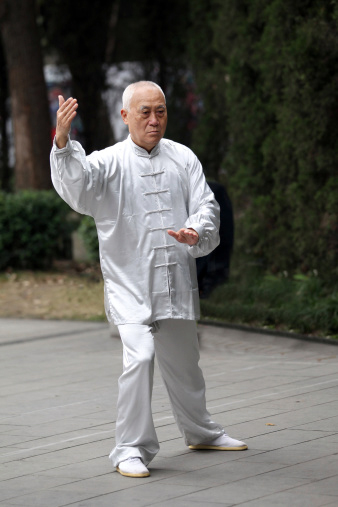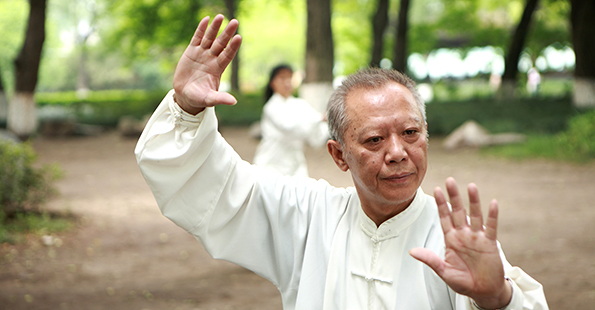Text 14 of the 40 Secret Classics of the Yang family states:
The Explanation of the Cultural (wen) and Martial (wu) Aspects in Taijiquan
Wen, the cultural, is the foundation (ti) and wu the martial, is the application (yong). The achievement of the cultural lies in the martial. It is applied through the essence, qi and spirit (shen) and the practice of physical training.
The achievement of the martial is attained by the cultural. It is established on the foundation of body, heart/mind (xin) and found in fighting. Further on in case of the cultural and the martial we speak of the right time and duration.
In the proper sequence it is the foundation of physical training. When the cultural and the martial are applied in sparring, the root of fighting is in the capability of storing and exerting.
 Therefore, when fighting is done in a cultural way, it is a soft physical exercise. The sinew power of the essence, qi, and the spirit. When in fighting the martial is applied, it will be hard fighting. The power of the heart/mind and the body. The cultural without the preparation of the martial is like foundation without application. The martial without the accompaniment of the cultural is application without foundation. A single beam of wood cannot provide support or a single palm, clap. This is not only true for the achievements in physical training or fighting – all things are subject to this principle.
Therefore, when fighting is done in a cultural way, it is a soft physical exercise. The sinew power of the essence, qi, and the spirit. When in fighting the martial is applied, it will be hard fighting. The power of the heart/mind and the body. The cultural without the preparation of the martial is like foundation without application. The martial without the accompaniment of the cultural is application without foundation. A single beam of wood cannot provide support or a single palm, clap. This is not only true for the achievements in physical training or fighting – all things are subject to this principle.
The cultural is an internal principle. The martial is an external skill. External skill without internal principle is surely only brute strength. It has lost its true face and consequently one will be defeated when attacked by an opponent. Inner principle without external skill is only the scholarship of stillness without knowing the application. But in a confrontation, the smallest error can lead to death. In the application against others, how can one not understand the explanation of the two words ‘the cultural’ and ‘the martial’?
Further on, in the foreword to Taijiquan Master Ma Hailong’s book, The Basics of Taijiquan, he writes e.g. about himself, “I was born into a martial arts family. The education I received from my family in my youth was the way (dao) of the cultural (wen) and the martial (wu) as a means of furthering self-cultivation. The purpose of this education is to help others and to develop righteousness. At the age of five I began to study the books of Confucius under my paternal grandfather, Ma Chanquan, a lecturer at Zhejiang University. At seven I began training in Taijiquan under the guidance of my maternal grandfather, Wu Jianquan (the founder of the Wu Style).” (Wu and Ma p. 125)
Thus the education Ma Hailong received was a unification of both, the cultural (wen) and the martial (wu). Reading as a Westerner, the chances are that such a passage will be glossed over, with no inkling of the importance this statement acquires in its Chinese context. The cultural and the martial, wen and wu, are twin concepts of huge significance in Chinese culture.

Leave a Reply